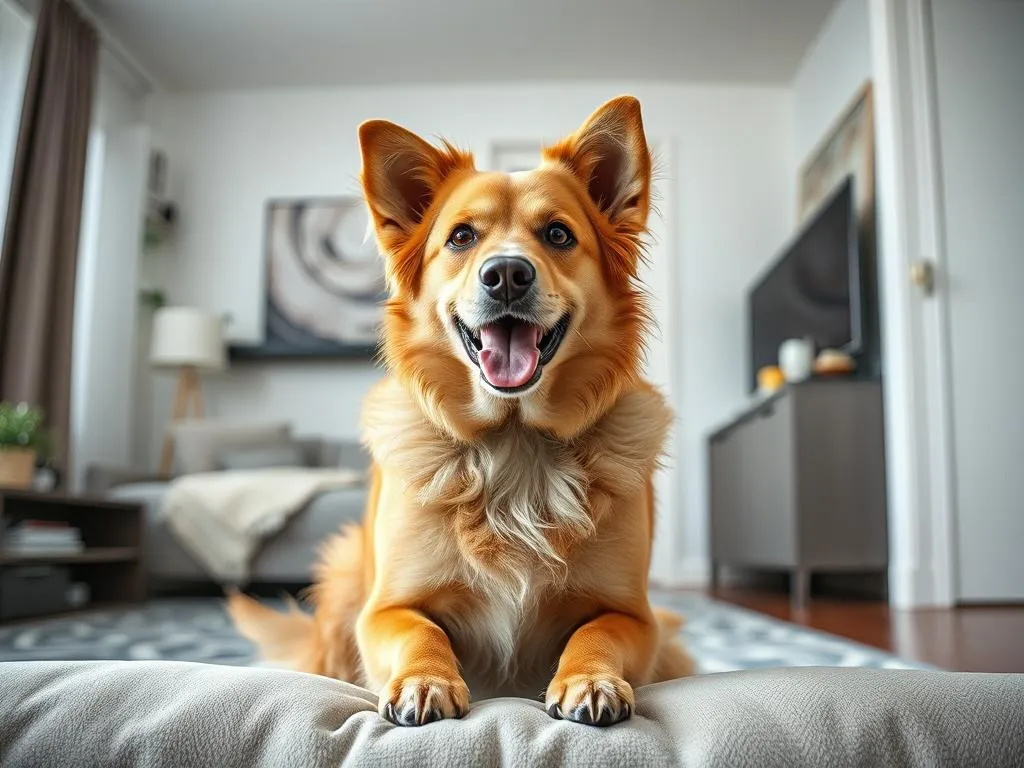
The trend of pet ownership is on the rise, especially in urban areas where many people are opting for the companionship of dogs despite living in apartments. In bustling cities, the love for pets has not waned; rather, it has evolved. Today, more individuals and families are considering how to have a dog in an apartment, navigating the challenges of limited space while enriching their lives with the joy a dog can bring.
Having a dog in an apartment can be a fulfilling experience, but it requires careful planning and adjustments to one’s lifestyle. From choosing the right breed to preparing your living space, daily routines, and building a community, there are various factors to consider. Let’s dive into the essential elements of having a dog in an apartment.
Choosing the Right Dog for Apartment Living
Size and Space Considerations
When it comes to how to have a dog in an apartment, size does matter. Smaller dog breeds often adapt better to confined living spaces. Breeds like the French Bulldog and Cavalier King Charles Spaniel are known for their amiable nature and suitability for apartment life. These dogs typically require less space to roam and play, making them ideal companions for city dwellers.
On the contrary, larger breeds may find it challenging to thrive in an apartment environment due to their size and energy levels. While some larger breeds can adapt, it is crucial to assess your apartment’s space before making a decision.
Temperament and Energy Level
Choosing a dog with a calm demeanor is essential for apartment living. High-energy dogs can become restless in smaller spaces, leading to behavioral issues. Breeds like the Basset Hound or Shih Tzu tend to have lower energy levels, making them excellent candidates for apartment life.
It’s also important to consider the dog’s temperament. A friendly and adaptable dog will be easier to manage in an apartment setting and will likely interact well with neighbors and guests.
Activity Requirements
Assessing a dog’s activity needs is vital when deciding how to have a dog in an apartment. Some breeds, like the Pug or Chihuahua, are content with short walks and indoor play. These dogs can thrive on limited exercise, making them suitable for individuals with busy lifestyles or those who may not have access to large outdoor spaces.
On the other hand, if you’re considering a more active breed, ensure you have a plan for daily exercise, such as regular walks or visits to local parks.
Preparing Your Apartment for a Dog
Dog-Proofing Your Home
Before bringing a dog home, it’s essential to dog-proof your apartment. This includes securing electrical cords, removing hazardous items, and ensuring that any plants are non-toxic to dogs. Consider creating a safe space for your dog, like a designated corner or room, where they can feel secure and comfortable.
You should also invest in baby gates if your apartment has stairs or areas that need to be off-limits. This ensures your dog stays safe and prevents potential accidents.
Creating a Comfortable Living Space
Setting up a comfortable living area for your dog is another critical step in how to have a dog in an apartment. Designate a specific area where your dog can relax, complete with a comfortable bed, toys, and water. This space should be away from high-traffic areas to give your dog a sense of security and peace.
Additionally, consider incorporating storage solutions for your dog’s belongings. Keeping toys and supplies organized will help maintain a clutter-free environment and make it easier to manage your pet’s needs.
Managing Noise Levels
Living in an apartment often means sharing walls with neighbors, making sound management a priority. Consider soundproofing options such as rugs, curtains, and wall hangings to help absorb noise.
Managing barking is also crucial; invest time in training your dog to minimize excessive barking. Techniques such as positive reinforcement can help your dog associate quiet behavior with rewards, creating a more harmonious living situation.
Daily Routines for Dog Owners in an Apartment
Exercise and Outdoor Time
Daily exercise is vital for any dog, regardless of size or breed. Establishing a routine for walks and outdoor play will help keep your dog healthy and happy. Explore your neighborhood for local parks or dog-friendly areas where you can spend quality time with your furry friend.
If your apartment complex has a dog park, take advantage of it! Regular outdoor time not only benefits your dog’s physical health but also provides mental stimulation.
Training and Socialization
Training is especially important in an apartment setting. Utilize the space you have for basic commands and obedience training. Consider enrolling in training classes to help your dog learn essential skills and socialize with other dogs.
Socialization is key for a well-adjusted pet, so look for opportunities to expose your dog to different environments, people, and other pets. This will help prevent behavioral issues and create a more confident dog.
Feeding and Care Routines
Establishing a feeding routine is crucial for your dog’s health. Choose a designated feeding area that is easy to clean and away from high-traffic zones. Stick to a consistent feeding schedule to help your dog adapt to apartment life.
Grooming is another aspect to consider. Depending on the breed, you may need to schedule regular grooming sessions to maintain your dog’s coat and hygiene. Look for grooming services nearby or consider at-home grooming tools to simplify the process.
Building a Community with Your Dog
Engaging with Neighbors
Building rapport with your neighbors is essential when living in an apartment. Introduce your dog to your neighbors, and encourage friendly interactions. A friendly dog can be a great ice breaker, leading to positive relationships within your community.
Discussing dog-related topics can also foster connections and create a sense of camaraderie among pet owners in the building.
Finding Local Dog-Friendly Spaces
Utilizing technology can help you locate local dog-friendly spaces. Many apps and websites provide information about parks, cafes, and events that allow dogs. Explore these resources to find new places to visit with your dog, enriching both your lives.
Additionally, consider attending local dog meetups or community events to socialize your dog and meet fellow pet owners.
Joining a Dog Club or Group
Joining a dog-related club or group can enhance your experience as a dog owner in an apartment. These clubs often organize activities, training sessions, and social events, providing opportunities for both you and your dog to engage with others.
Participating in group activities can also encourage your dog to socialize with other pets, promoting a well-rounded and fulfilling lifestyle.
Addressing Challenges of Apartment Living with a Dog
Noise and Disruption Management
Noise can be a significant challenge when living in an apartment with a dog. Implementing training techniques for minimizing barking can make a big difference. Techniques such as teaching the “quiet” command or using distraction methods can help manage excessive noise.
Additionally, providing mental stimulation through toys and puzzles can keep your dog engaged, reducing the likelihood of barking out of boredom.
Dealing with Small Spaces
Limited space can pose challenges, but there are solutions to make the most of your apartment. Utilize vertical space for play by incorporating shelves for climbing or providing interactive toys that can be used in smaller areas.
Keeping your apartment clean and organized is crucial for both your comfort and your dog’s well-being. Regular cleaning, coupled with designated areas for your dog’s belongings, can help maintain a tidy living environment.
Handling Pet Restrictions
Many apartments have specific pet policies that you must navigate. It’s essential to understand these restrictions before adopting a dog. Look for pet-friendly apartments or consider discussing your situation with landlords to find a suitable living arrangement.
Being upfront about your plans to have a dog can often lead to a more favorable outcome. Some landlords may be willing to make exceptions or offer pet deposits to accommodate responsible pet owners.
Conclusion
Having a dog in an apartment can be a rewarding experience, filled with companionship and joy. By carefully considering factors such as breed selection, space preparation, and daily routines, you can create a harmonious living environment for both you and your dog.
With the right planning and a commitment to meeting your dog’s needs, apartment living can be an enjoyable and fulfilling journey. So, assess your living situation and consider adopting a dog that fits your lifestyle. The bond you build with your furry friend will undoubtedly enrich your life in countless ways.









